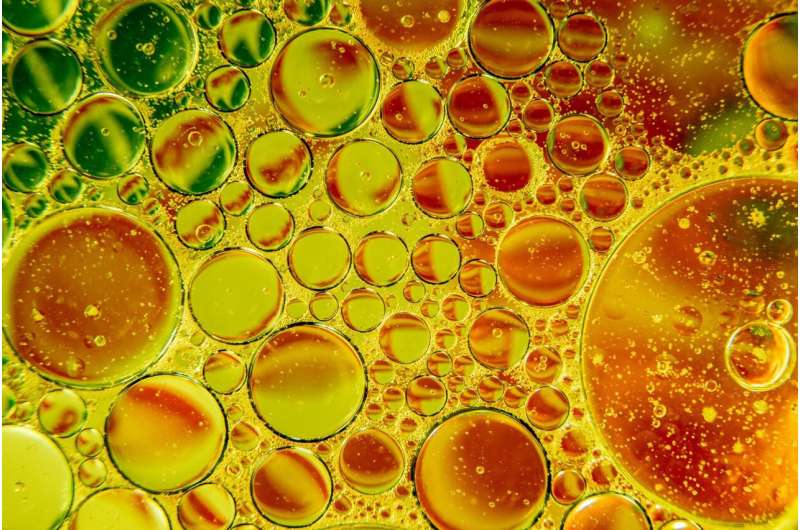
Credit: Pixabay/CC0 Public Domain
A team of chemical engineers from Université PSL, CNRS, Harvard University and chemical company Calyxia, has discovered a way to prevent or delay coalescence in some immiscible liquids.
In their paper published in the journal Science, the group describes how experiments they conducted led to the discovery of a way to get some fluids such as water and oil, to remain as an emulsion for long periods of time without the use of surfactants.
It is widely known that when two immiscible liquids, such as water and oil are mixed, they do not remain so for very long—they slowly separate into two layers. This is because they never really mix to begin with; instead, they coexist as droplets that coalesce when they come into contact with one another.
Because of this, chemists have developed various surfactants that force such liquids to remain “mixed” for some period of time. But, as the researchers involved in this new study point out, such surfactants are often toxic to the environment, humans or both.
The work by the team involved mixing many different kinds of immiscible liquids (mainly water and multiple types of oils) and then studying them to learn more about how they behaved. In so doing, they noted in some instances, very thin but stable films of oil that spontaneously formed between droplets after samples were shaken.
Taking a closer look showed that the thin films induced adhesion between droplets while at the same time prevented them from coalescing. And that allowed the two liquids to remain in a shaken-type state for long periods of time. The team notes that such a phenomenon has never been observed before.
After conducting more experiments, the research team found that oils that were highly polar and had a high molecular weight prevented coalescence best. They also noted that the thin films formed the moment the fluids were shaken.
They point out that most vegetable oils can be polymerized without much effort, suggesting that many biodegradable materials could be made without the need for a surfactant. The same might be the case, they suggest, for fragrances and cosmetics.
The researchers further suggest that the techniques they used to “mix” the immiscible liquids could also conceivably be used to develop new types of plastics made of biodegradable materials, and water.
More information:
Claire Nannette et al, Thin adhesive oil films lead to anomalously stable mixtures of water in oil, Science (2024). DOI: 10.1126/science.adj6728
© 2024 Science X Network
Citation:
Scientists discover method to prevent coalescence in immiscible liquids (2024, April 25)
retrieved 25 April 2024
from https://phys.org/news/2024-04-scientists-method-coalescence-immiscible-liquids.html
This document is subject to copyright. Apart from any fair dealing for the purpose of private study or research, no
part may be reproduced without the written permission. The content is provided for information purposes only.
>>> Read full article>>>
Copyright for syndicated content belongs to the linked Source : Phys.org – https://phys.org/news/2024-04-scientists-method-coalescence-immiscible-liquids.html
